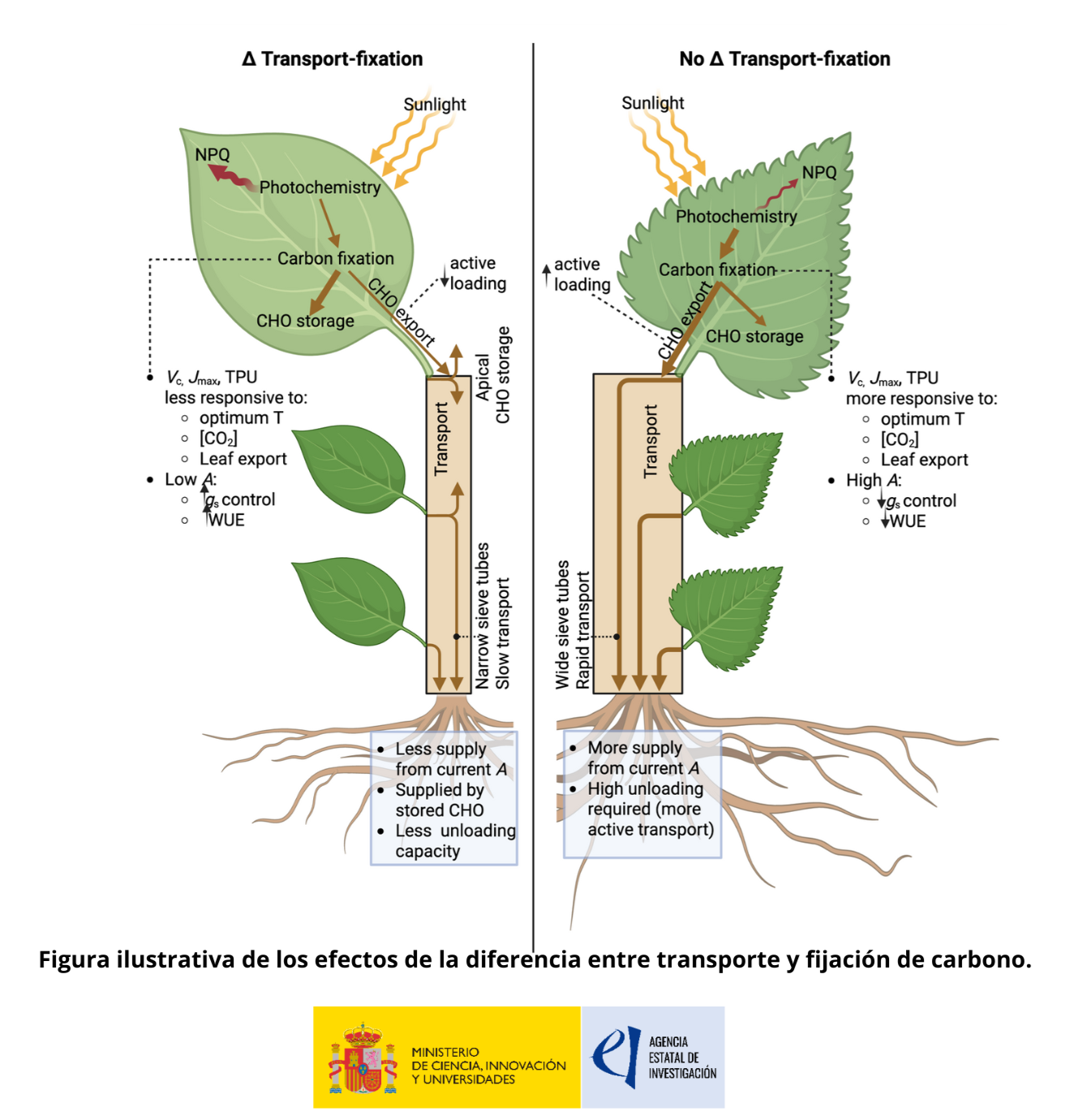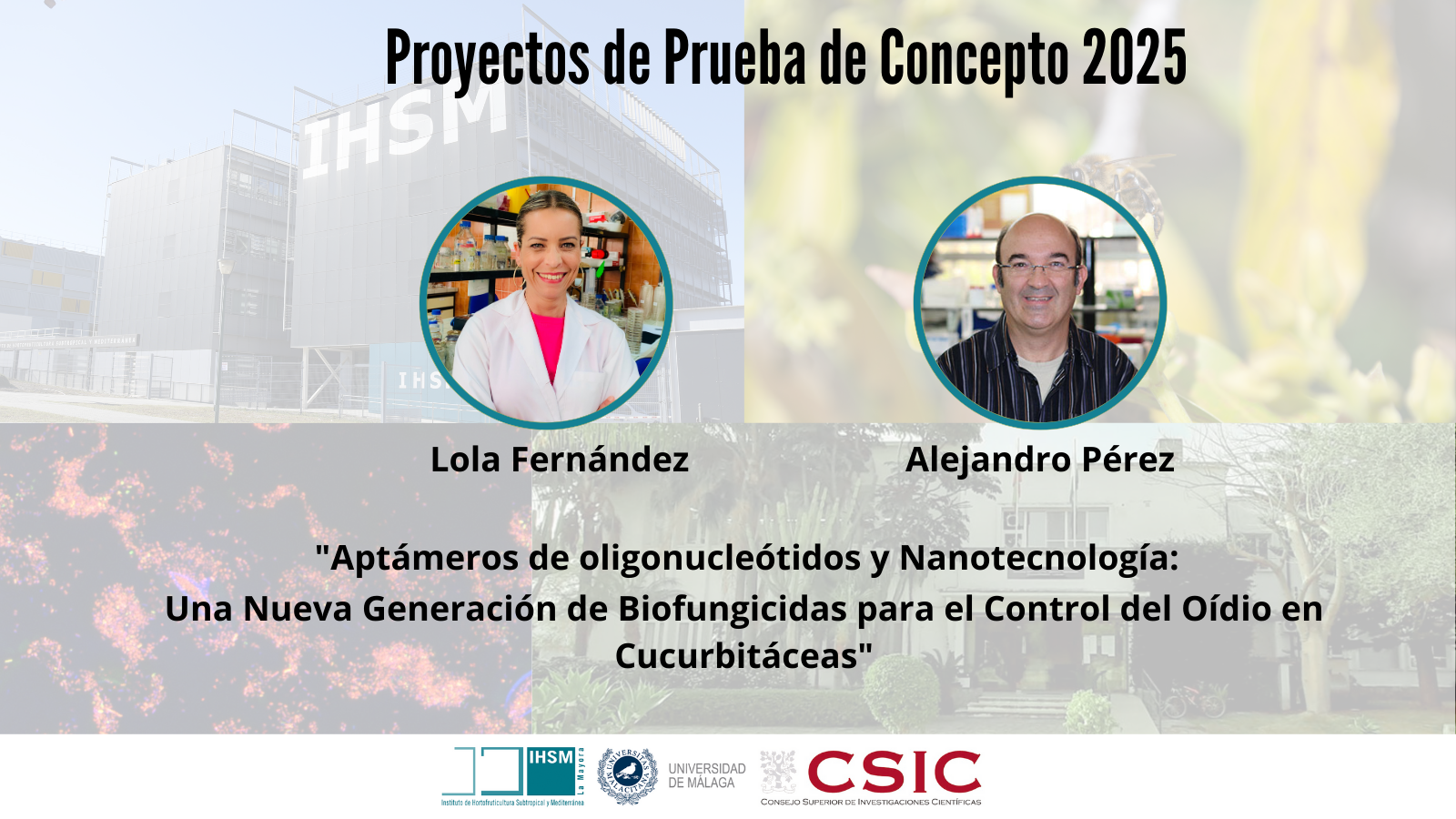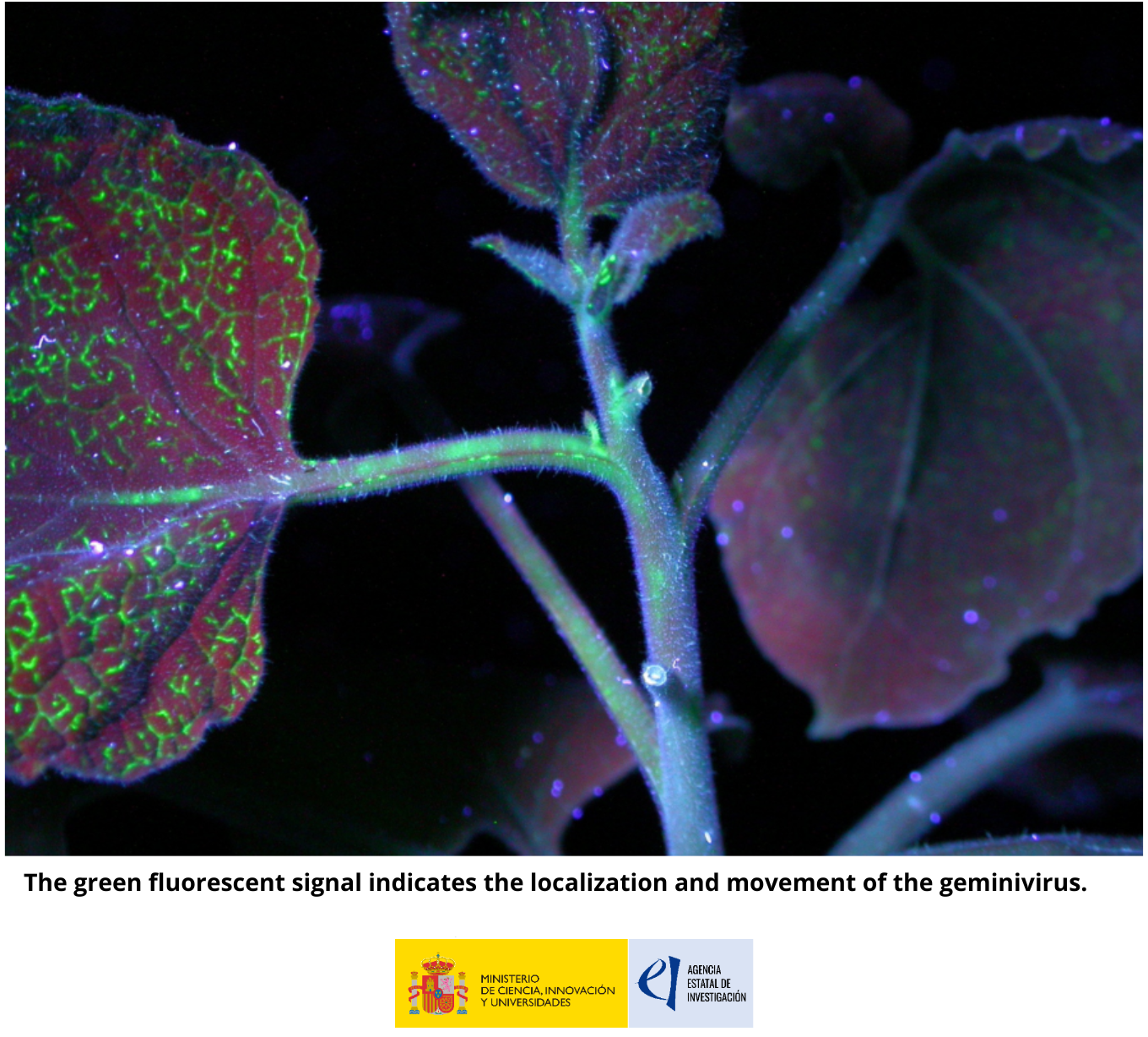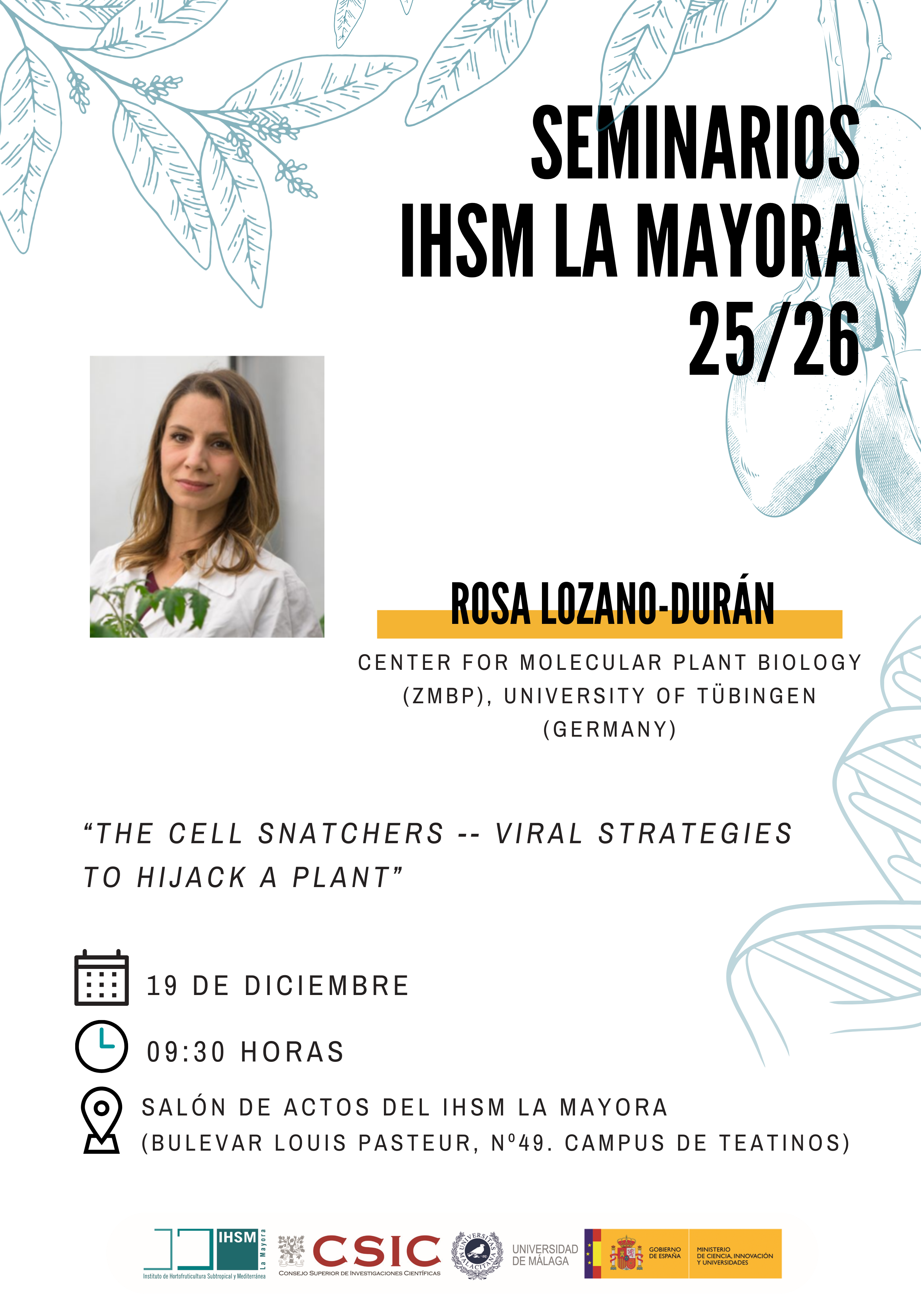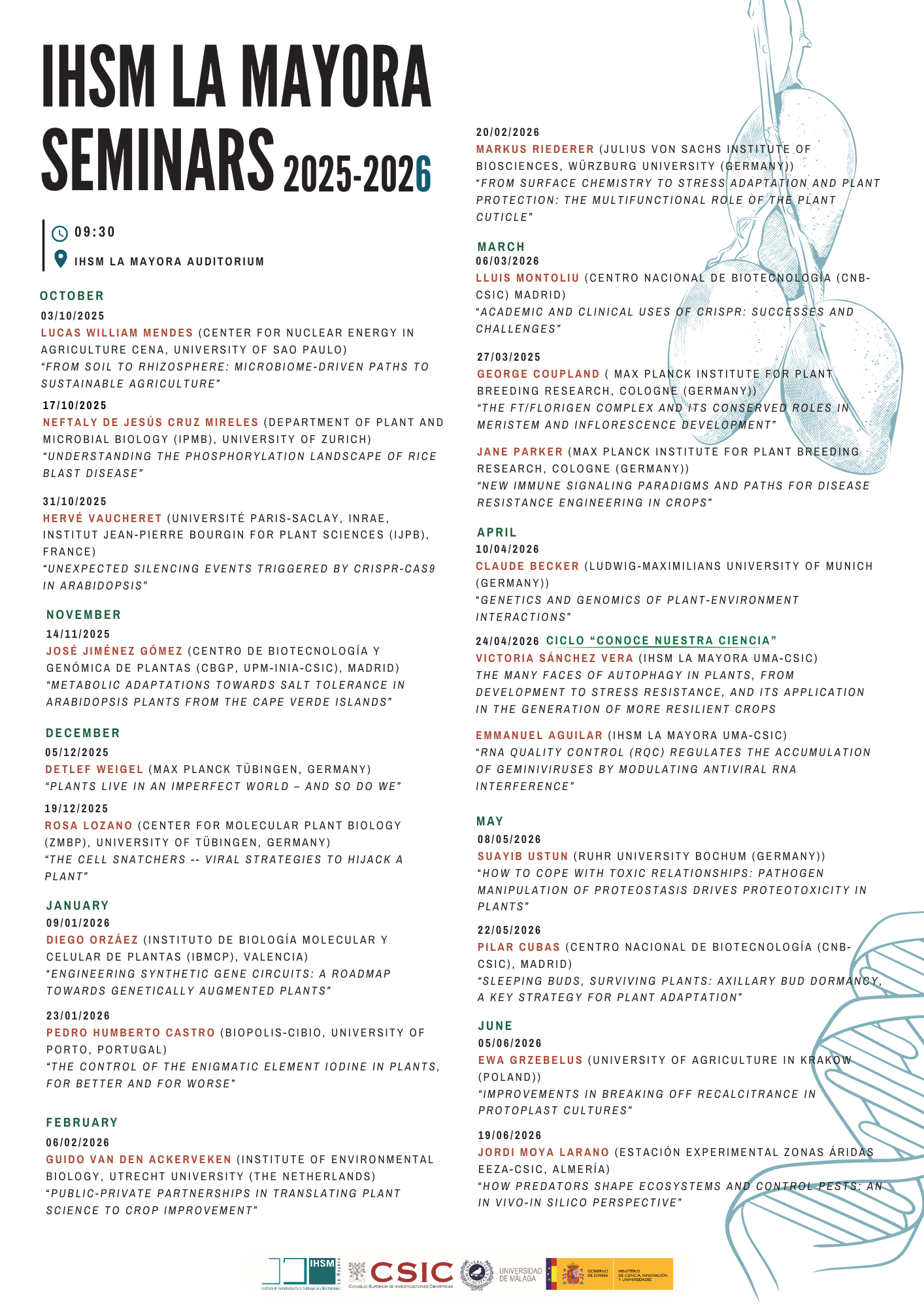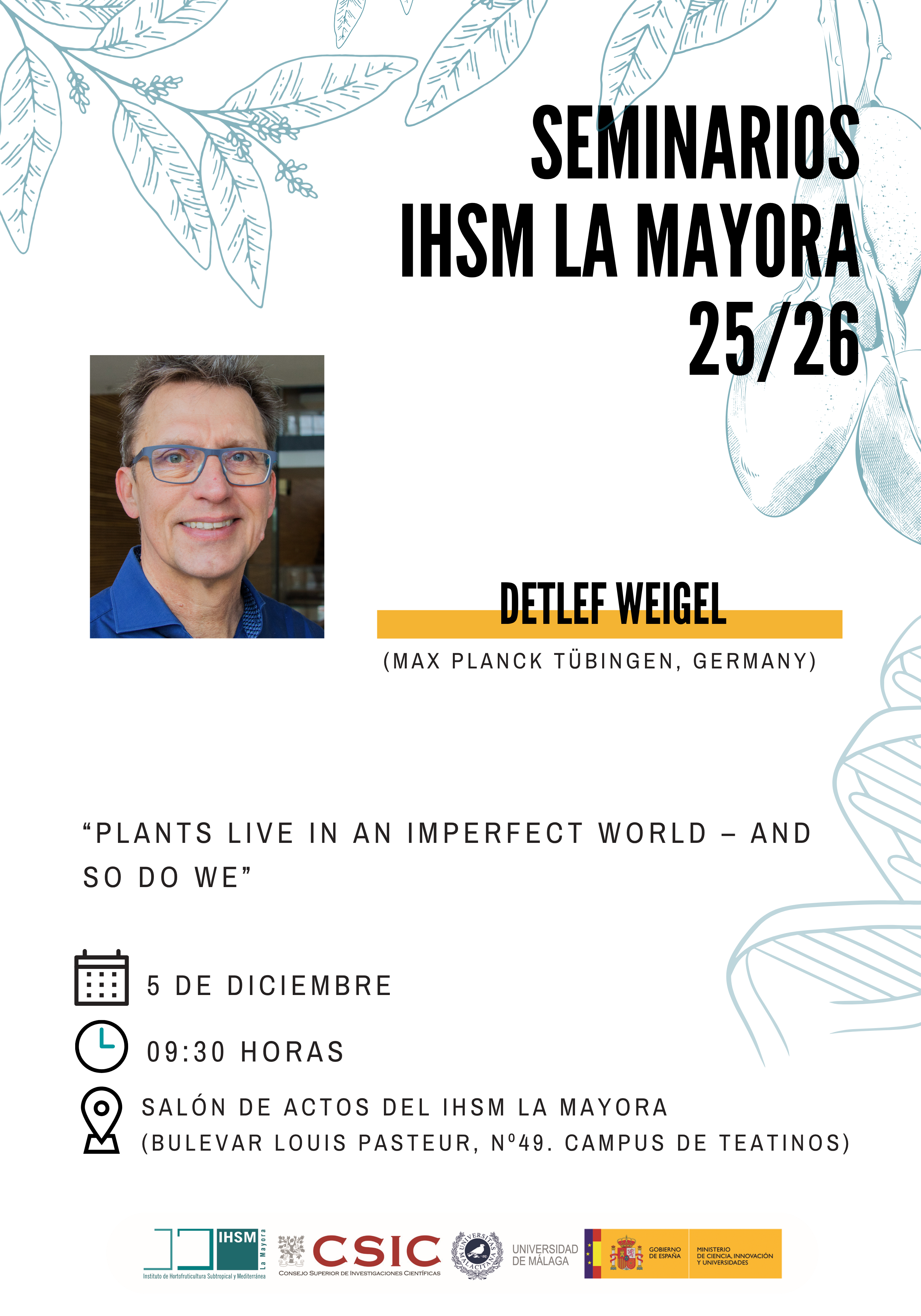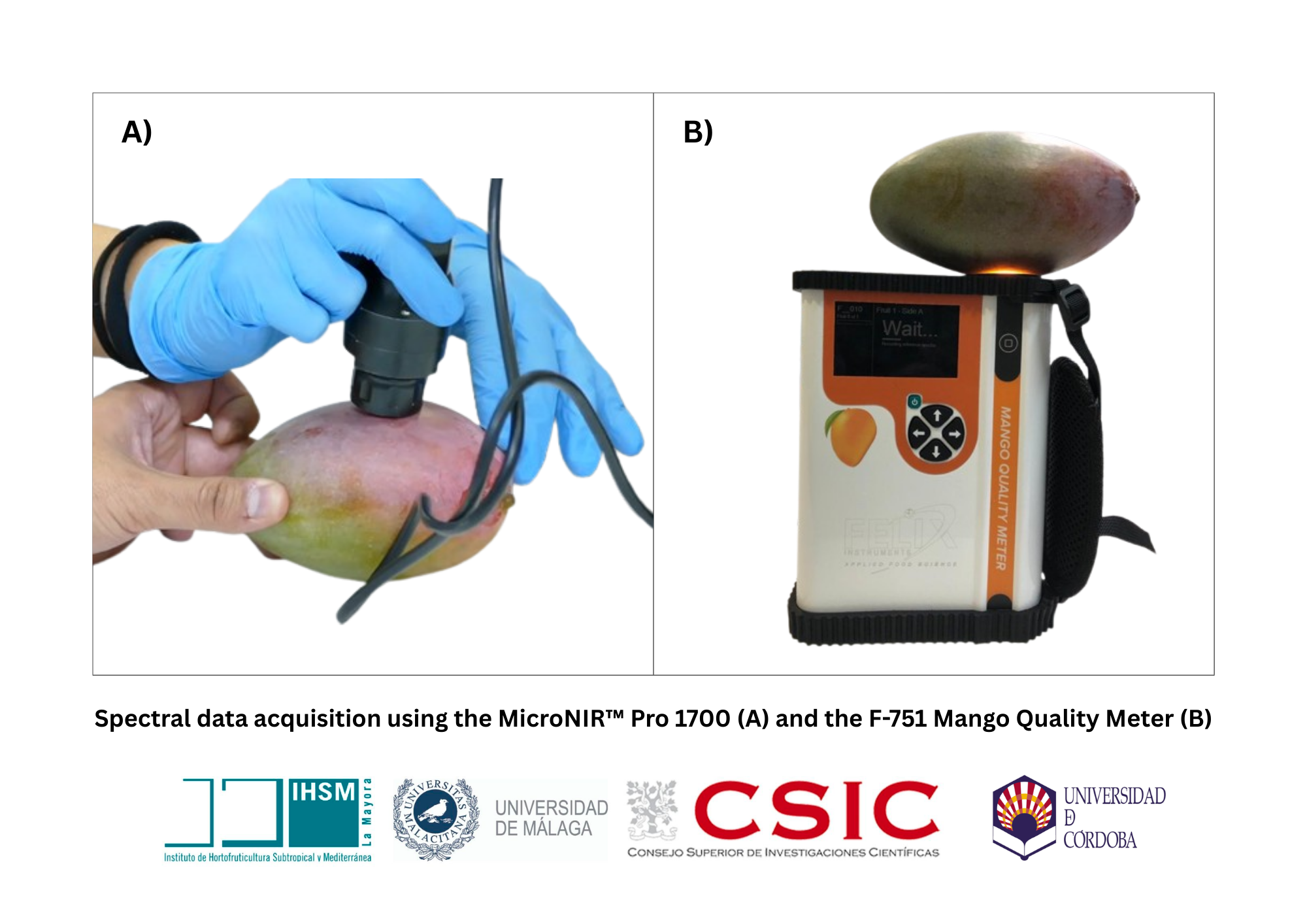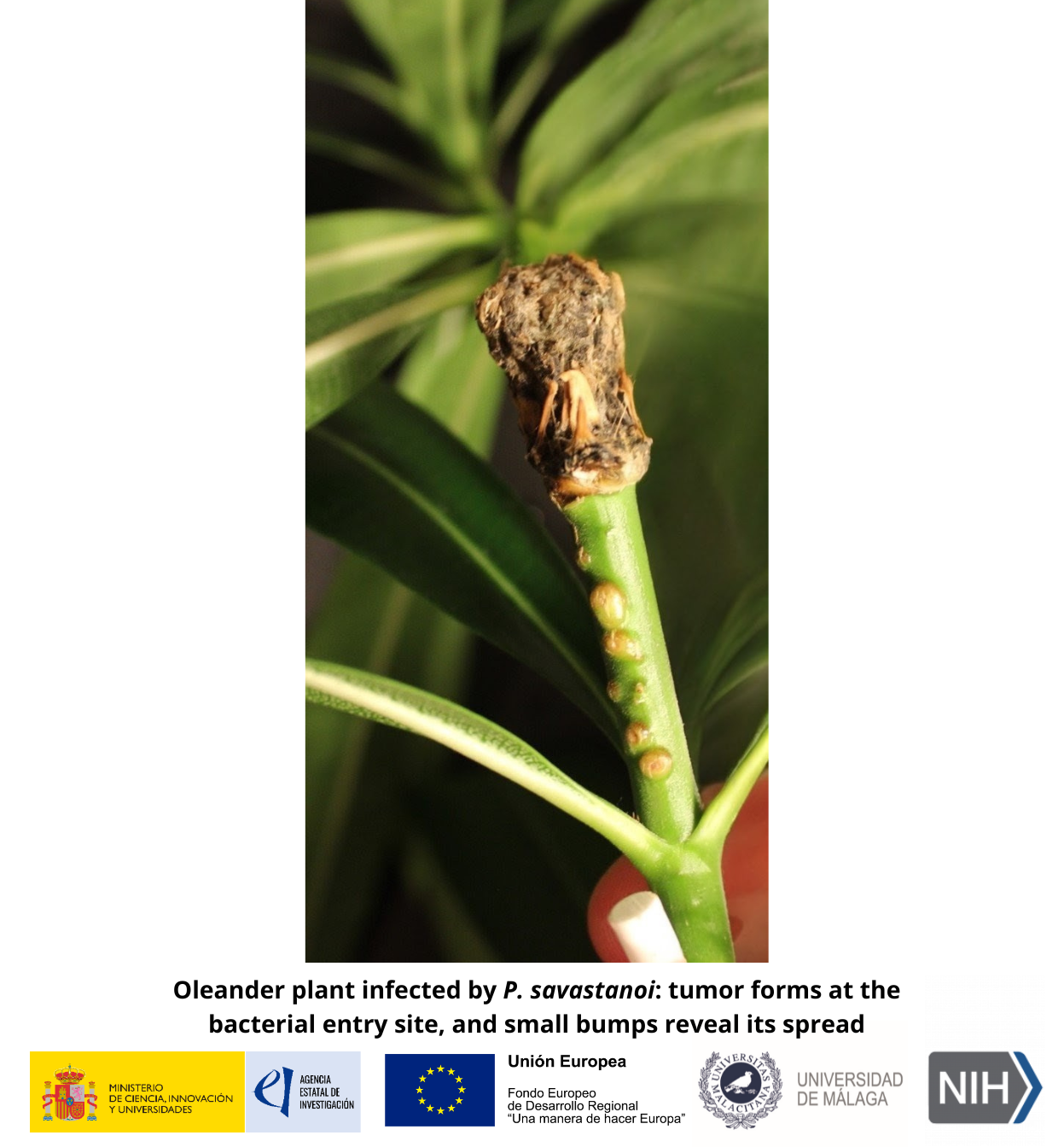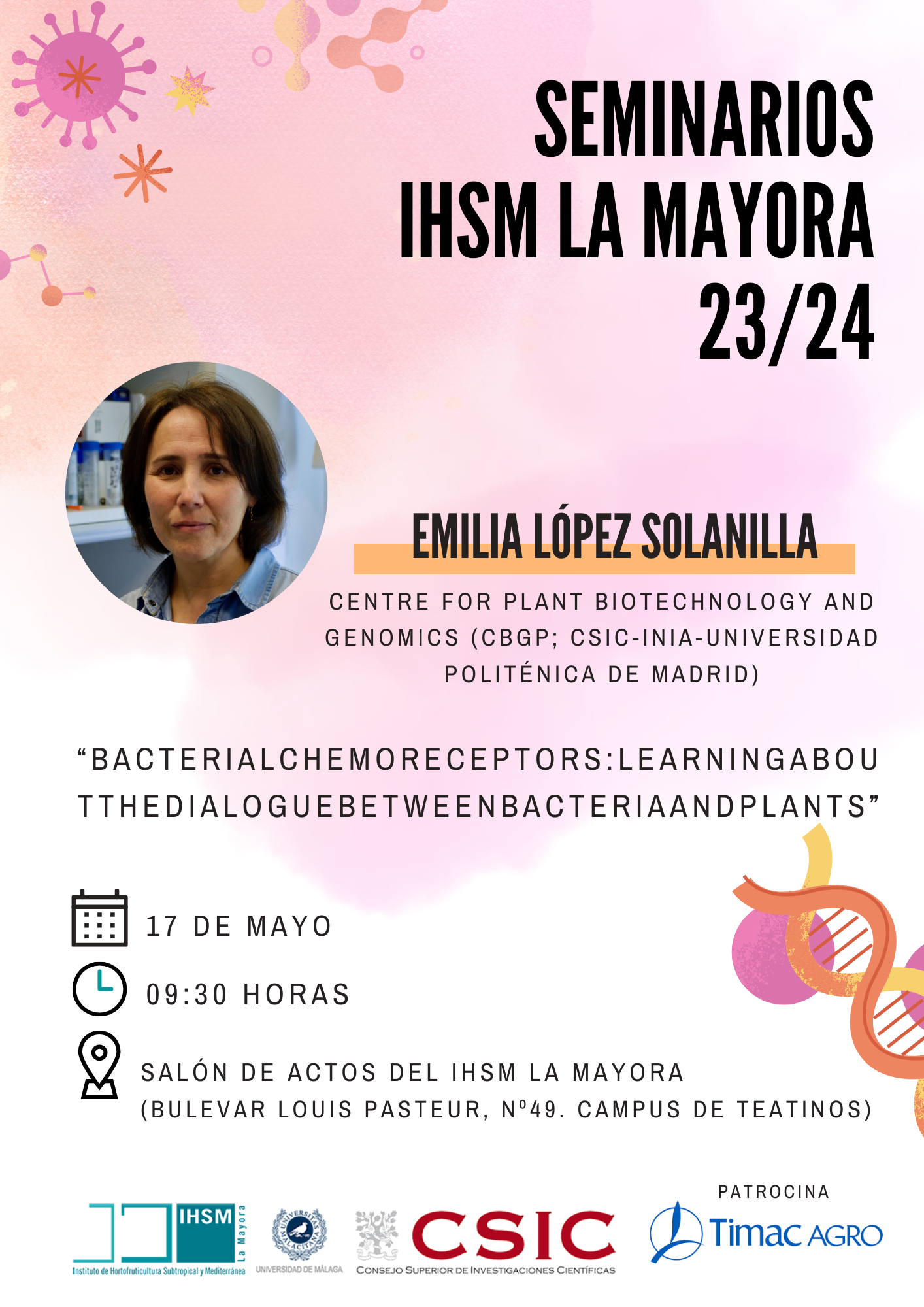
Seminarios IHSM La Mayora - Emilia López Solanilla (CBGP, Madrid )
Bacterial chemoreceptors: learning about the dialogue between bacteria and plants Adaptation to host environment plays a key role during the onset of the infection by phytopathogenic bacteria. Chemosensory functions are key players during this process. Chemoperception allows bacteria to locate entry points to plant tissues by perceiving plant compounds, and it is involved in the regulation of the virulence program. Central to these perception systems are the proteins known as chemoreceptors (CRs). Although inactivation of chemotactic signaling causes in most cases a drop in virulence, there is a dearth of information on the signals recognized by CRs in phytopathogenic bacteria. Phylogenomic analyses using representative microbial species covering the whole prokaryotic phylogeny has allowed us to identify CRs potentially relevant for plant-association. Using two model phytopathogenic bacteria with different pathogenic styles: Pseudomonas syringae pv. tomato and Dickeya dadantii, we perform two complementary approaches. First, a biochemical characterization of the ligand binding profile of the candidate CR, and then, a phenotypic characterization of the mutant in the corresponding CR, in which we analyzed alterations in the chemotactic profile and its implication in pathogenesis through different functional assays. This approach has revealed as a useful tool to predict CRs important for plant-microbe interactions. Subsequent characterization of selected CRs confirm their relevance in plant pathogenesis. We are also interested in unveiling the signal transduction pathways behind the chemoperception. Some bacteria present more than one chemosensory pathway and their function and croostalk could be related with different levels of plasticity during the interaction with the host.

